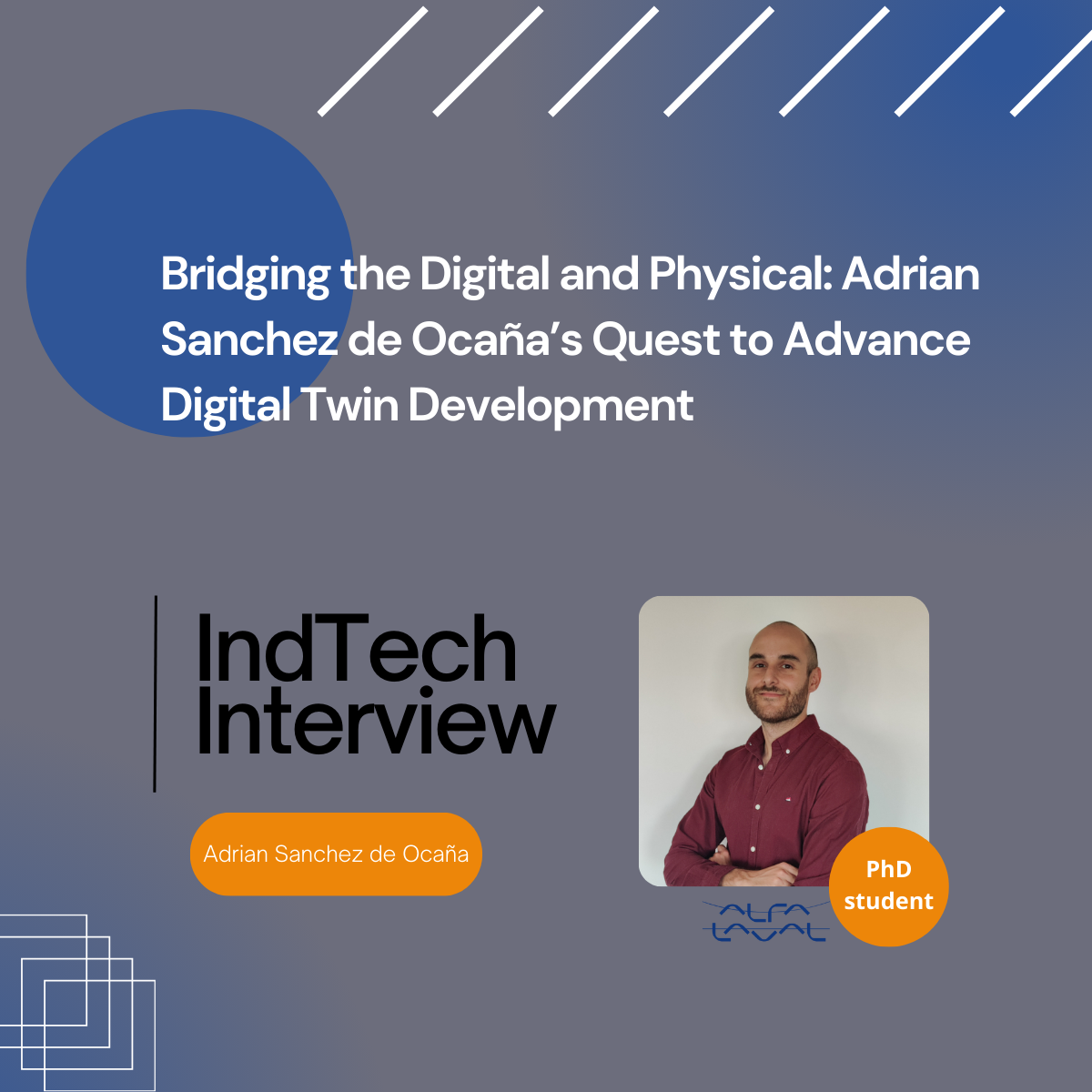Bridging the Digital and Physical: Adrian Sanchez de Ocaña’s Quest to Advance Digital Twin Development
From an early fascination with simulation games to pioneering research in manufacturing, Adrian Sanchez de Ocaña has always been drawn to the power of virtual modeling. As he advances his doctoral research, he’s tackling one of the most pressing challenges in modern industry: how to develop and implement digital twins effectively.
What Exactly is a Digital Twin?
For those unfamiliar with the concept, a digital twin is more than just a digital model—it’s an interactive, real-time replica of a physical system that enables predictive insights and analytics. “Think of Google Maps,” Sanchez de Ocaña explains. “It represents your surroundings, predicts travel time, and even redirects you based on real-world events. A digital twin functions in a similar way, mirroring physical production systems to optimize efficiency.”
While much of the industry’s focus has been on the implementation and application of digital twins, Sanchez de Ocaña saw a crucial gap in the development process itself. Many companies, he observed, struggle to move beyond the initial stages, unsure of how to structure their approach. “It’s a complex technology, and without a clear process, manufacturers often don’t know where to start,” he notes. The result? Costly failures, wasted time, and underutilized potential.
One of the biggest misconceptions, he argues, is the pursuit of an exact virtual replica. “People associate the word ‘twin’ with identicality, but that’s never been the goal,” he says. “A good enough copy for making data-driven decisions is far more valuable than a photorealistic model.” His thesis emphasizes the need for a structured framework to guide companies through the complexities of digital twin development—one that takes into account not just the technical aspects but also the people and processes involved.
“A digital twin isn’t just a model—it’s a system, integrating data acquisition, virtual modeling, and user interfaces to support manufacturing optimization.”
His research, rooted in a real-time longitudinal case study at Alfa Laval, allowed him to observe the entire development lifecycle of a digital twin in a manufacturing setting. Initially, he approached the concept as a mere model, but the case study revealed a more intricate reality. “I was wrong,” he admits. “A digital twin isn’t just a model—it’s a system, integrating data acquisition, virtual modeling, and user interfaces to support manufacturing optimization.”
This shift in perspective reinforced the importance of considering organizational readiness. “Technology is already there and advancing faster every day,” Sanchez de Ocaña notes. “The main challenge isn’t technology—it’s people and processes. We adapt slower than technology does.” His framework aims to bridge this gap, offering manufacturers a practical guide to scaling digital twin development effectively.
Looking ahead, he hopes his research will serve as a toolkit for manufacturers, helping them navigate the complexities of digital twin adoption. “Without advances today, there will be no readiness for what’s coming,” he says. “I’d love to see that in five or ten years, we’ve moved so far ahead that new challenges and paradigms have emerged.”
Reflecting on his journey, Sanchez de Ocaña finds the most rewarding aspect of his thesis work to be the ability to articulate complex ideas and contribute to a growing research community. He credits his supervisors—Jessica Bruch, Ioanna Aslanidou, and Imad Berrouyne—for shaping his research approach and making the process more fulfilling.
Balancing Research and Industry: What Comes Next?
So, what’s next? Fortunately, he doesn’t have to choose between academia and industry. “In my industrial PhD student position, I get to do both—apply my research and continue pursuing a doctoral project,” he says enthusiastically.
And if he could create a digital twin of anything outside of manufacturing? His answer is immediate: “My car. I’ve had way too many visits to the workshop lately, and I’d feel extra safe knowing every weird noise is perfectly normal.”
With his structured approach to digital twin development, Sanchez de Ocaña is not only shaping the future of manufacturing but also ensuring that industries—and perhaps even cars—run more smoothly than ever before.
Alfa Laval is a leader in the development and manufacturing of heat transfer, separation, and fluid handling. Advanced automation solutions will support Alfa Laval’s overall focus on sustainability and inclusion.
